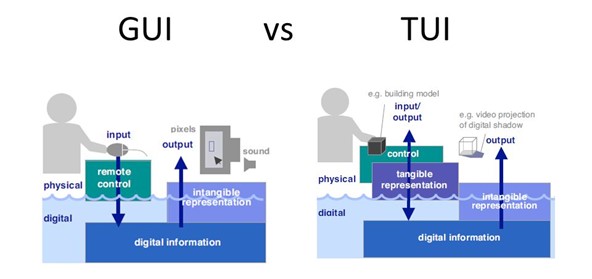The Lifelong Kindergarten group at the MIT Media Lab is focused on using technology to support creative learning and playful expression. One of their main research areas is based on a constructivism-based approach, an educational theory that emphasizes the role of active learning and experimentation in the learning process. This approach is one of the key elements that make Lifelong Kindergarten projects accessible and easy to use for people of all ages.
While the Lifelong Kindergarten group’s work is primarily focused on how technology can be used to support creative learning and playful expression, it also overlaps with the field of tangible user interfaces (TUIs). TUIs are a type of user interface that uses physical objects or devices to control and interact with digital information or systems. This can include interactive tables and walls or physical objects such as buttons, knobs, and other controls that can be manipulated by the user.

Museums and science centers are increasingly incorporating TUIs into their exhibits to enhance the visitor experience. By using physical objects to control digital information and systems, visitors can engage with the exhibit in a more intuitive and natural way. For example, an exhibit about physical forces could be build with a TUI that allows visitors to explore different forces and motion by moving physical objects on a table and visualizing the effects.

One of the key aspects of TUIs is the use of physical objects to control digital information and systems. This is something that the Lifelong Kindergarten group’s approach also involves, as it is based on constructivism, which emphasizes the role of active learning and experimentation in the learning process. This approach makes learning and digital interaction more accessible and tangible, especially for children and others.
References:
interactions: experiences, people technology; Volume XIX.1 2012
Lifelong Kindergarten: Cultivating Creativity through Projects, Passion, Peers, and Play; Mitchel Resnick; 2018
https://tangible.media.mit.edu/vision/
https://courses.media.mit.edu/2015fall/mas834/index.html